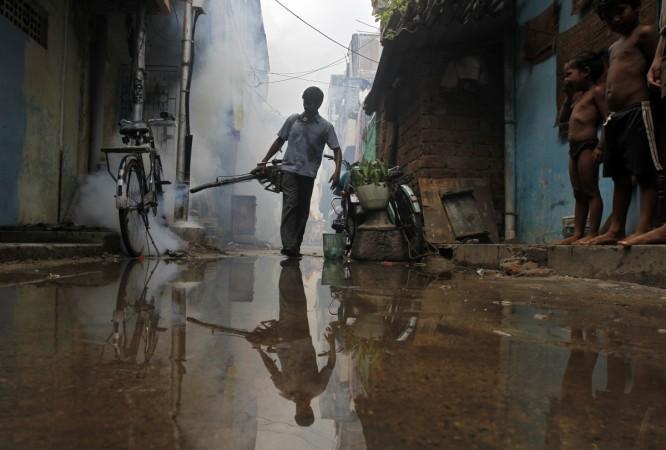
Maharashtra is under the grip of dengue crisis, with the number of cases having increased by more than thrice this year. Nearly 14,203 cases of dengue have been reported so far this year, as compared to 442 cases last year in the state, Maharashtra's Health Minister Deepak Sawant was quoted by Press Trust of India as saying.
Two people have already died of dengue this year.
The state government has now classified dengue as a 'notified disease,' which would enable the authorities to check residential premises for larvae breeding of Aedes aegypti, the mosquito that causes dengue.
The health minister added that nearly 2,800 health workers have been imparted clinical management training to deal with dengue cases.
The governments in other states have also stepped up surveillance in hospitals to detect dengue cases, which was reported more during the monsoon, when the prevalence of water-borne diseases is high.
Karnataka has seen a total of 20,391 suspect dengue cases this year, of which 10,000 were reported in June alone, BN Dhanyakumar, Director, Karnataka Health Services, was quoted by the Deccan Chronicle as saying.
In Delhi, where 40 dengue cases have been reported so far, the state government is setting up 300 dengue clinics to screen and treat patients, according to the Hindu.
What is Dengue?
- According to the World Health Organization (WHO), dengue is a mosquito-borne viral infection which causes flu-like illness, and rarely develops into a potentially lethal complication.
- Dengue virus is transmitted by female mosquitoes, mainly of the species Aedes aegypti. This mosquito also transmits chikungunya, yellow fever and Zika infection. Dengue is widespread throughout the tropics.
- The number of dengue cases has risen dramatically over the past several decades. Nearly half of the world's population is now at risk.
- Dengue is more prevalent in crowded urban and semi-urban areas with tropical and sub-tropical climates.
- Although there is no specific treatment for dengue/ severe dengue, early detection and proper treatment significantly lowers chances of fatality due to the disease.
- A vaccine for dengue licensed by the regulatory authorities in several countries may help prevent dengue in people in the age group of 9-45 years living in high-risk areas.
How is Dengue transmitted?
The virus is transmitted to humans through the bite of the infected female Aedes aegypti mosquito.
After a person is bitten by the mosquito, he or she can transmit the infection for a maximum period of 12 days. The humans become a source of virus for uninfected mosquitoes and thereby spread the disease.
Dengue Symptoms
Dengue usually causes flu-like symptoms, including high fever (40°C/104°F) accompanied by severe headache, pain behind the eyes, muscle and joint pains, nausea, vomiting, swollen glands or rash. These symptoms last anywhere between two to seven days.
The symptoms of severe dengue, according to WHO, could be plasma leaking, fluid accumulation, respiratory distress, severe bleeding, or organ impairment.
The dangerous signs could appear along with the common symptoms or even after that. A sudden decrease in body temperature (below 38°C/100°F), severe abdominal pain, persistent vomiting, rapid breathing, bleeding gums, fatigue, restlessness and blood in vomit are alarming signals. The patient needs to be admitted to the hospital in the next 24 to 48 hours to avoid further complications and risk of death.
Treatment, Prevention and Control
Although no specific treatment for dengue is available currently, adequate care by physicians and nurses can help reduce the mortality from 20 percent to 1 percent. Here are the WHO-recommended guidelines for effective dengue control:
- disposing of solid waste properly and removing artificial man-made habitats;
- covering, emptying and cleaning of domestic water storage containers on a weekly basis;
- applying appropriate insecticides to water storage outdoor containers;
- using of personal household protection such as window screens, long-sleeved clothes, insecticide treated materials, coils and vapourisers;
- improving community participation and mobilisation for sustained vector control;
- applying insecticides as space spraying during outbreaks as one of the emergency vector-control measures;
- active monitoring and surveillance of vectors should be carried out to determine effectiveness of control interventions.
(Source: WHO)















